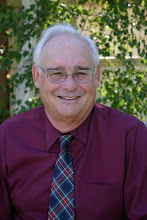John Hardisty spent nearly 30 years guiding the city of Bakersfield, Calif., forward as its development services director. He managed the city’s Planning Department as Bakersfield grew to include about 143 square miles and serve a population of nearly 340,000 people.
During those years, his focus was on the present and the future. Now retired from the city and working as a planning consultant and court mediator, Hardisty’s focus is also on the past, as he writes an occasional column for The Bakersfield Californian .
Beginning with his May 23 feature on the turn-of-the-century home of the late Louise V. Olcese, a Bakersfield capitalist, Hardisty will write about the historic, significant and sometimes downright strange homes and buildings in Bakersfield.
Bakersfield, at the southern end of California’s San Joaquin Valley, has a rich history rooted in oil and agriculture. It also has a hard-scrabble reputation born of the struggles of the Depression-era Okies, who flocked to the community.
Known for its brand of Country Western music and Basque food, Bakersfield can be as sophisticated as any city – and mind you, it’s California’s 11th largest – but it can also be a bit quirky.
Hardisty’s occasional column will highlight such attractions as Bakersfield’s tallest building and explain why at 12 floors it was required to obtain a variance from the city’s height limitation. He also will interview the architect of Bakersfield’s futuristic-looking triangle building and recall the 1970s battle waged to get city clearance to build the “funny looking thing.”
At the center of what was once the city of Kern (east Bakersfield) is a sprawling, formerly elegant train station. He will tour readers through the now mostly boarded up and weather-beaten structure, which is used by the railroad to house a skeleton staff and store supplies.
“To keep moving forward, it is important for every community to understand its past,” said Hardisty, explaining the focus of his column. “To attempt progress without an understanding and respect for history is like building without a foundation.”
This sensitivity to history is particularly important to Bakersfield. The city was hit in 1952 by an earthquake that destroyed much of its downtown and many of its public buildings. Some contend Bakersfield’s historic character was turned to rubble by the earthquake. But if you look closely, you will find some remnants have survived.
Hardisty’s column will take readers on a treasure hunt for Bakersfield’s historic character. The articles will be reprinted on this blog beginning with the May 23, 2010 feature about the Olcese House.
Subscribe to:
Post Comments (Atom)

No comments:
Post a Comment